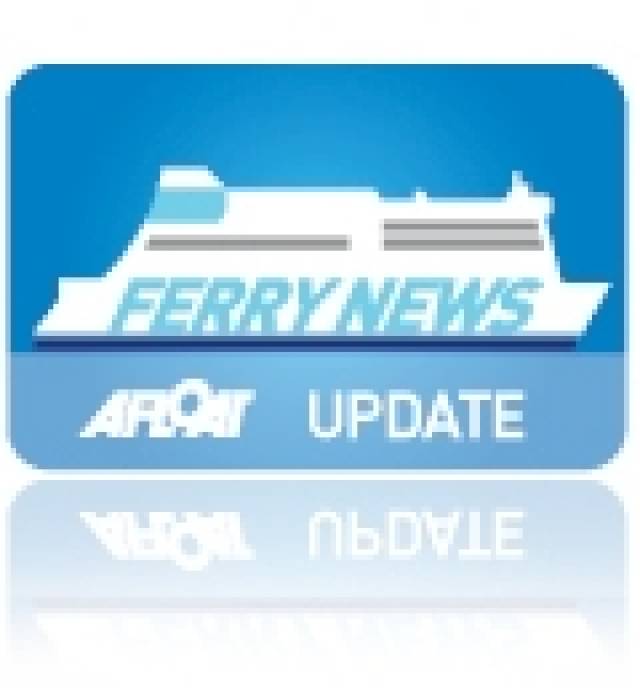#LiberationLaunch – The countdown is finally over as Condor Ferries launched state-of-the-art fast ferry, Condor Liberation with the first official sailing yesterday from Poole to the Channel Islands.
The 880 passenger car-carrying trimaran had called to Guernsey (St.Peter Port) and Jersey (St. Helier). In addition the maiden voyage was an opportunity to reveal the company's new branding of a livery scheme sporting new colours as she headed out of Poole Harbour, Dorset.
Amid much fanfare the 102m fast-ferry set sail on her inaugural sailing, where local schoolchildren and ferry enthusiasts joined the Mayor of Poole, Councillor Peter Adams at Baiter Park to watch the newcomer depart across Poole Harbour, past Brownsea Island and Sandbanks Peninsula.
Representing £50 million investment, Condor Liberation is the first of her kind in Northern Europe, and marks a new era in sea travel. The Austal 2010 built craft trimaran (three hull) design offers greater stability and better sea-keeping abilities, providing a smoother ride for passengers.
Commenting on the maiden voyage, Alicia Andrews, Executive Director – Commercial at Condor Ferries, said: "Today marked a very important milestone in the history of Condor Ferries. We are very excited to welcome Condor Liberation into service and delighted to see the huge crowd gathered at Baiter Park to help us celebrate this momentous occasion".
Since her 10,500 nautical mile delivery voyage into Poole on Boxing Day as previously reported on Afloat.ie, Condor Liberation has undergone an extensive customisation programme. This has involved installing a new Duty Free shop, children's play area, a range of eating and drinking outlets plus a choice of three new seating lounges, to include two upgrade areas.
For a video of Condor Liberation on berthing trials, click here to see the trimaran approaching Jersey's St. Helier Harbour.
The Channel Islands operator now in their 51st year also have another fast-ferry, the InCat 86m built, Condor Rapide that serves the Guernsey to France route, using the Breton port of St. Malo.
In addition to running Commodore Clipper, a conventional car, passenger and freight carrying vessel that offers an all-weather, year round Portsmouth to Guernsey and Jersey service.
Afloat.ie adds that the 500 passenger / 100 car/ 92-trailer ferry is fresh from refit. She had completed a 10-day call at A&P Falmouth from where she returned to service only last weekend.
In addition to all the publicity centred on the Condor Liberation, Afloat will later also be focusing on the role of Commodore Clipper.
Since the introduction of Commodore Clipper in 1999, the ferry has brought countless holiday makers to the Channel Islands. Plus the ferry serves as an integral lifeline for residents on the Channel Islands and the link to mainland UK.






























































